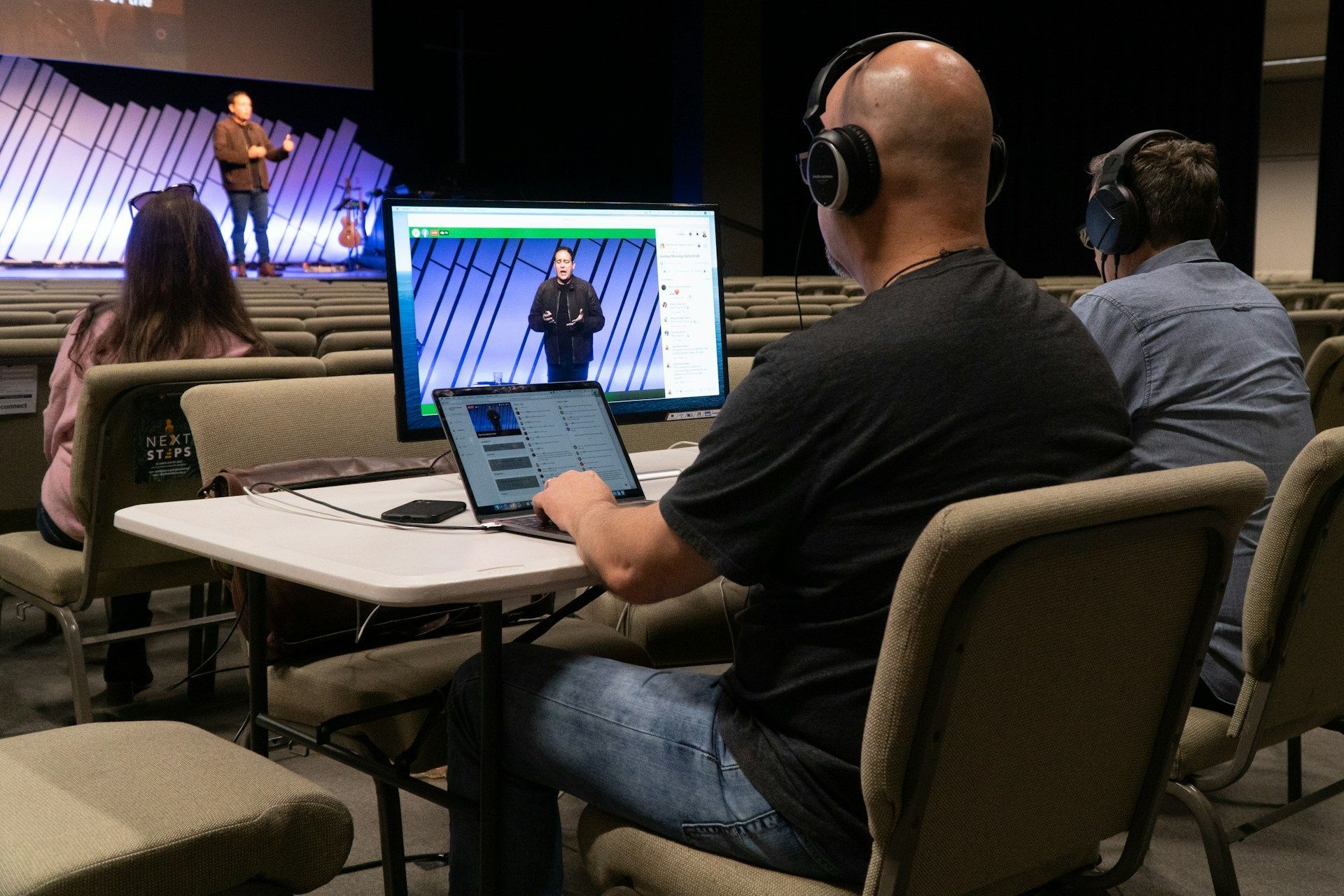Matching Church Ad Content with Your Target Audience Goals
When creating ads for churches, it’s easy to focus on the message you want to share. But without considering who you're talking to, even the best message can miss the mark. Matching your ad content with the goals and needs of the people you’re trying to reach can help your church connect better and keep people engaged. Whether you're promoting a new ministry or inviting people to a service, your ad should speak directly to the interests and values of that audience.
Understanding who you're talking to doesn't just shape what your message says. It also affects how it's delivered, what images to use, and even the tone of your copy. It gives your content direction and a better chance of connecting with the right people. At Faithworks Marketing, we believe that making advertising for churches more meaningful starts with knowing your audience.
Identify Your Church’s Target Audience
Before creating ad content, it’s a good idea to step back and figure out who’s already part of your church and who you hope to reach. Your audience might include families with young kids, teens looking for a youth group, older adults seeking community, or people new to town. Different audiences come with unique concerns and goals.
To get a better picture of your audience, try focusing on three things:
1. Demographics:
Start with basic details like age, gender, family structure, and general lifestyle. Are you trying to reach young couples, retirees, or single parents? This helps you shape wording and imagery with the right tone and approach.
2. Psychographics: Explore values, beliefs, interests, and behaviors. Is your audience looking for spiritual growth, community support, or a place to serve others? These emotional factors matter just as much as data points.
3. Community Needs: Think about what’s happening in your local area. If people around you are dealing with stress, housing challenges, or feel disconnected, addressing those in your messaging can make your ad feel more timely and real.
One simple way to understand your audience better is by asking them. Use a Sunday morning bulletin insert to collect feedback. Create a quick poll on social media. And of course, just notice what’s getting the most attention in your current outreach. If your youth group photos are getting lots of engagement, that’s a cue about your audience’s interests.
The more you know about who you're speaking to, the more clearly you can lead them to take action. This isn't guesswork. It’s active listening, being curious, and responding with thoughtful messages.
Tailor Messages to Audience Needs
Once you understand who your audience is, the next step is to figure out what they care about. People are far more likely to respond when content feels personal and relatable. Messages that speak to someone’s life experiences, hopes, or struggles are the ones that stick.
Tailoring your ad content doesn’t have to be hard. Think about how you'd invite someone into conversation. For example, if you're trying to reach a young family, your message might focus on friendly kids programs, help for busy parents, or fun events that bring families together. If you’re reaching seniors, you could highlight more traditional worship services, prayer groups, or volunteer opportunities.
Here are some examples of how you can shape messages:
- Families: Show how your church makes space for fun and growth for kids. Mention safety, team leaders people can trust, and things to help parents stay involved.
- Teens and Young Adults: Speak to the need for belonging and purpose. Show what being active in the youth group looks like, or what new outreach projects are opening doors for students.
- Seniors:
Use a warm tone that promotes peace and connection. Highlight support groups, small Bible studies, or ways to give back through mentoring or service.
Pay close attention to the tone and visuals of your ads. Try using real photos from your community. People react better to content that feels real and inviting than polished stock images. Use wording that feels natural and easy to read. Rather than formal phrases, keep it light and friendly.
Use the Right Platforms for Your Audience
Not all audiences use the same tools. Some generations scroll through Instagram stories, others stay up to date on Facebook, and some folks don’t use social media much at all. If you want advertising for churches to really connect, your message has to show up where your audience is already spending time.
Here’s a quick overview to help match content with platform styles:
- Facebook: Great option for middle-aged and older adults. Use it for events, church news, group photos, and sermon clips. Video and photo posts get high reach.
- Instagram:
A better fit for teens and younger adults. Keep it visual with behind-the-scenes snaps, event reminders, quotes, or story polls.
- Google Ads:
Effective for people who are searching online for a church or a specific service. This is helpful for outreach beyond your social following.
Trying a mix of platforms can give you more chances to get seen. Use each platform’s strengths, and don’t just copy and paste across all channels.
Keep in mind that types of ads must also adapt. What works visually and textually on Instagram might not suit the format of a Google search ad. Always test what feels natural for each outlet, and be open to little adjustments.
Track Performance and Keep Adjusting
Once your ads go live, tracking how they perform helps you make wiser decisions later on. It’s about seeing what works well and where changes might help. This feedback loop keeps your ad strategy growing.
Check for signs of engagement like:
- Clicks, comments, or shares on a post
- Website visits linked to the ad
- Signups for a service, group, or event
- Types of comments or questions people are leaving
Use tools like built-in Facebook or Instagram insights to check engagement. You’ll learn what kind of posts pull people in, and which ones fall flat. Also, pay attention to how your team and community respond. Do people talk about the ads in conversation? Are visitors mentioning they heard about the event online?
Look at both the creative (photos, language, message) and the placement (platform, time of day, format). These small tweaks can help you improve future campaign results. One photo might land better than another. A different headline could draw more attention.
Treat this as an ongoing process. Don’t stop just because a post went live. Track, learn, update, and grow.
Bringing It Back to Meaningful Connection
At the heart of it, great church advertising isn't just about getting attention. It's about building genuine connections. When your ads clearly speak to real people with real needs, they’re more likely to feel welcome, seen, and ready to respond.
Focus first on knowing who your community is, what they care about, and where they’re spending their time. Then speak their language, with visuals and messages that reflect your shared values.
This kind of outreach takes patience and small changes along the way. But when done well, it invites more than clicks. It encourages visits, deeper involvement, and new relationships with your church.
If you're ready to make your message more effective and sincere, a smarter ad strategy can help. Let Faithworks Marketing support you in the steps ahead.
To make a real impact with your church advertising, it's key to use platforms where your audience is already active. Whether you're reaching out to younger members through engaging Instagram ads or connecting with the older generation on Facebook, each approach requires a finely tuned strategy. If you're looking to elevate your
advertising for churches, consider the expertise available at Faithworks Marketing. Learn how we can help tailor your outreach to connect with your community more effectively.












